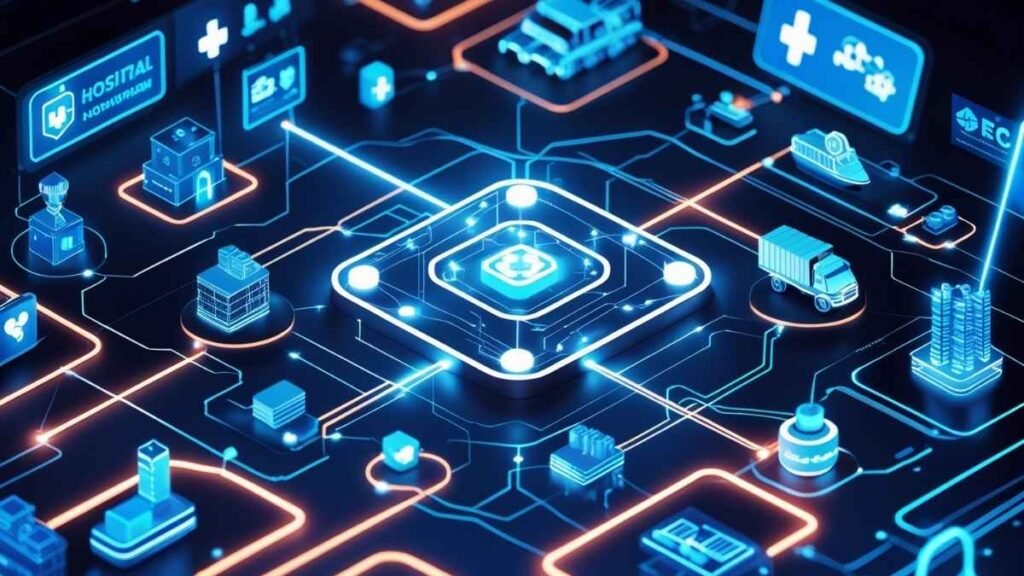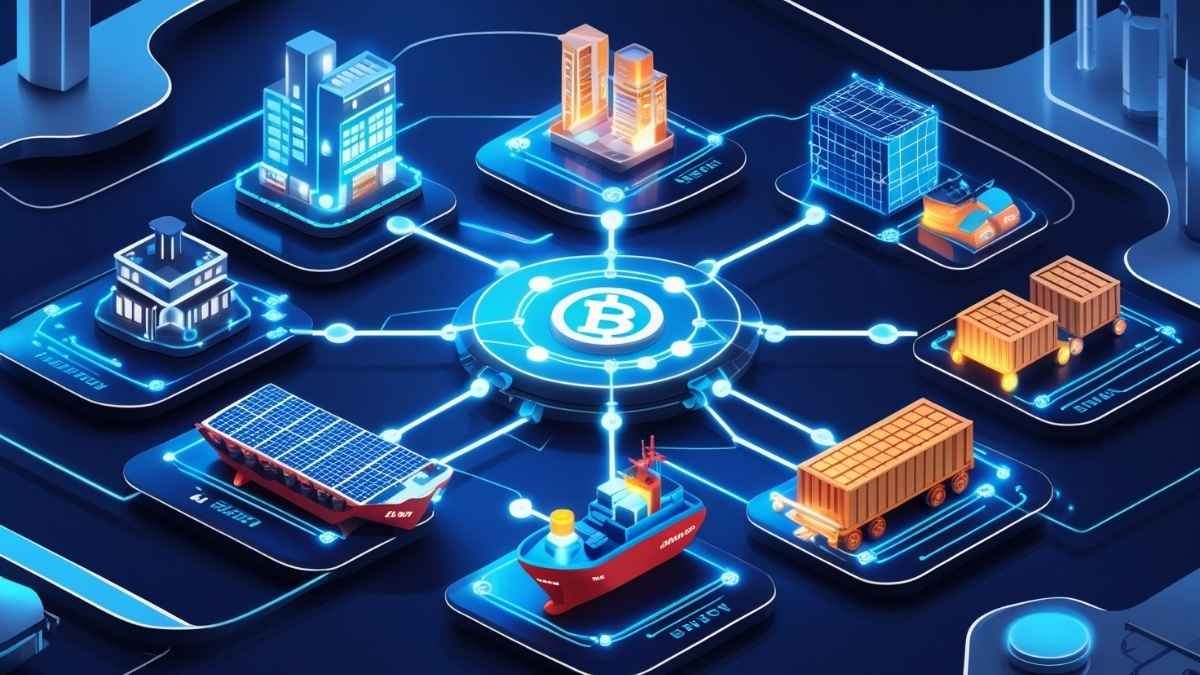Blockchain technology is transforming industries. It offers secure, transparent, and decentralized solutions. By 2025, its impact is undeniable. Businesses use blockchain to improve efficiency, cut costs, and build trust. This article explores the top 10 blockchain use cases. These applications are reshaping finance, healthcare, supply chains, and more. Each use case shows how blockchain drives innovation.
1. Decentralized Finance (DeFi)
Decentralized Finance, or DeFi, is changing finance. It uses blockchain to remove intermediaries like banks. Users access financial services directly. These include lending, borrowing, and trading. DeFi runs on platforms like Ethereum. Smart contracts automate transactions. They ensure security and transparency.
In 2025, DeFi is growing fast. Millions use it worldwide. It offers low-cost services. It also provides financial access to unbanked populations. For example, platforms like Aave and MakerDAO let users lend or borrow crypto. DeFi reduces fees and speeds up transactions. However, risks like hacks remain. Strong security is critical.
2. Supply Chain Transparency
Blockchain improves supply chain management. It tracks goods from origin to consumer. Every step is recorded on an immutable ledger. This ensures transparency and reduces fraud. Companies like IBM and Maersk use blockchain for logistics.
In 2025, supply chain blockchain is vital. It fights counterfeiting. For instance, Walmart uses IBM’s Food Trust to trace food products. This ensures safety and quality. Blockchain also speeds up processes. Smart contracts automate payments and deliveries. Industries like pharmaceuticals benefit. They track drugs to prevent fakes.
Supply Chain Blockchain Benefits
| Benefit | Description | Example Company |
|---|---|---|
| Transparency | Tracks goods in real-time. | Maersk |
| Anti-Counterfeiting | Verifies product authenticity. | Walmart |
| Automation | Uses smart contracts for payments. | FedEx |
3. Healthcare Data Management
Blockchain secures healthcare data. It stores patient records on a decentralized ledger. This ensures privacy and interoperability. Patients control who accesses their data. Doctors access records instantly across systems.
In 2025, blockchain transforms healthcare. Electronic Health Records (EHRs) are more secure. MedicalChain is a key player. It protects patient privacy. Blockchain also tracks drugs. The MediLedger Project prevents counterfeit medications. Clinical trials benefit too. Blockchain ensures transparent data. This builds trust in research.

4. Smart Contracts
Smart contracts are self-executing agreements. They run on blockchain. Terms are coded into the system. When conditions are met, actions happen automatically. This cuts out middlemen. It reduces costs and errors.
In 2025, smart contracts are everywhere. They streamline real estate deals. They automate insurance claims. For example, Chainlink Labs connects smart contracts to real-world data. This ensures accuracy. Industries like finance and logistics use them. They save time and boost trust.
5. Digital Identity Verification
Blockchain secures digital identities. It creates tamper-proof records. Users control their personal data. They share it only with trusted parties. This reduces identity theft. It also simplifies verification.
In 2025, digital identity is critical. Governments and businesses adopt blockchain. For example, Georgia uses it for land records. It ensures secure property ownership. Microsoft explores blockchain for digital IDs. This helps users access services safely.
Digital Identity Applications
| Application | Description | Example |
|---|---|---|
| Secure Records | Stores identity data immutably. | Georgia Govt |
| User Control | Lets users manage data access. | Microsoft |
| Fraud Prevention | Reduces identity theft risks. | Various |
6. Cross-Border Payments
Blockchain simplifies cross-border payments. It removes intermediaries. Transactions are faster and cheaper. Platforms like Ripple (XRP) lead the way. They settle payments in seconds, not days.
In 2025, global payments are transformed. Banks use blockchain for efficiency. It cuts fees for consumers. Blockchain also supports Central Bank Digital Currencies (CBDCs). These digital currencies are secure and transparent. They improve financial systems.
7. Intellectual Property Protection
Blockchain protects intellectual property (IP). It tracks ownership of digital content. Creators like artists and musicians benefit. They ensure fair compensation. Platforms like Audius use blockchain for music royalties.
In 2025, IP protection is stronger. KodakOne helps photographers secure image rights. Blockchain timestamps content. This proves ownership. It reduces piracy. Smart contracts automate royalty payments. This ensures creators are paid fairly.
8. Voting Systems
Blockchain secures voting. It creates transparent and tamper-proof systems. Votes are recorded on an immutable ledger. This reduces fraud. It boosts trust in elections.
In 2025, blockchain voting grows. Platforms like Follow My Vote enable secure online voting. Governments test blockchain for elections. It ensures accuracy. It also increases voter access. Mobile voting becomes possible. However, scaling remains a challenge.
9. Real Estate Transactions
Blockchain streamlines real estate. It automates transactions with smart contracts. This cuts out brokers. It reduces costs. Property records are stored securely. This prevents fraud.
In 2025, real estate is more efficient. Blockchain simplifies buying and leasing. It ensures transparent ownership. For example, smart contracts handle rental agreements. They automate payments. This saves time for buyers and sellers.
Real Estate Blockchain Benefits
| Benefit | Description | Impact |
|---|---|---|
| Cost Reduction | Removes intermediaries like brokers. | Lower fees |
| Transparency | Secures property records. | Fraud prevention |
| Speed | Automates transactions. | Faster deals |
10. Energy Management
Blockchain optimizes energy systems. It enables peer-to-peer energy trading. Producers sell excess energy directly. Blockchain tracks energy production. It ensures transparency.
In 2025, energy markets are decentralized. Power Ledger uses blockchain for energy trading. It promotes renewable energy. Blockchain also tracks carbon credits. This supports sustainability. Companies reduce their carbon footprint.
Why Blockchain Matters in 2025
Blockchain is more than a trend. It’s a game-changer. Its decentralized nature builds trust. Its transparency fights fraud. Its automation saves time. In 2025, the blockchain market is worth billions. It grows at a rapid pace. Businesses adopt it to stay competitive.
Industries face challenges. These include inefficiency and lack of trust. Blockchain solves them. It offers secure solutions. It streamlines processes. It empowers users. From finance to healthcare, blockchain reshapes how we work.
Table 4: Blockchain Market Growth
| Year | Market Value (USD Billion) | Source |
|---|---|---|
| 2023 | 17.46 | IdeaUsher |
| 2025 | 32.69 | Spydra |
| 2027 | 162.84 | Spydra |
Challenges and Future Outlook
Blockchain faces hurdles. Scalability is a big issue. Some blockchains handle limited transactions. This slows adoption. Security risks exist. Hacks and bugs can harm users. Regulation is another challenge. Governments create new rules. Businesses must adapt.
Despite challenges, the future is bright. Interoperability is improving. Blockchains like Ethereum and Polkadot connect. This boosts efficiency. Green blockchain initiatives grow. They reduce energy use. By 2025, blockchain is mainstream. It drives innovation across industries.
Conclusion
Blockchain is revolutionizing 2025. Its use cases span finance, healthcare, and more. DeFi empowers users. Supply chains gain transparency. Healthcare data stays secure. Smart contracts automate tasks. These applications show blockchain’s power.
Businesses must embrace blockchain. It offers competitive advantages. It builds trust and efficiency. The technology is evolving. Its impact will grow. By understanding these use cases, industries can prepare. Blockchain is shaping a decentralized, transparent future.
References:






